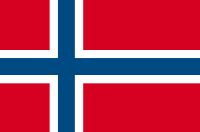All Categories
History






This section provides an overview for protein hydrolysate as well as their applications and principles. Also, please take a look at the list of 6 protein hydrolysate manufacturers and their company rankings. Here are the top-ranked protein hydrolysate companies as of December, 2025: 1.A. Costantino & C. spa, 2.FrieslandCampina Ingredients, 3.Kerry Group plc..
Table of Contents
Protein hydrolysate is a mixture of amino acids derived from the hydrolysis of proteins found in meat, fish, soybeans, and wheat. This process can be achieved through acid hydrolysis with hydrochloric acid, enzymatic hydrolysis using proteases, or thermal hydrolysis. Acid hydrolysis, while common, may produce potentially carcinogenic chloropropanols, prompting safety measures like setting maximum standard values for these compounds by the Codex Alimentarius Commission.
Protein hydrolysates are utilized in both food and cosmetic industries.
Used for seasoning in processed foods such as pickles, sauces, fish cakes, and instant noodles, protein hydrolysates impart flavor and richness without being classified as food additives under food safety laws.
Applied in soaps and shampoos, they enhance foaming and moisturization. Notably, safety standards for wheat hydrolysates in cosmetics address past concerns over allergic reactions.
Protein hydrolysates offer umami and richness, along with improved digestion and absorption, muscle recovery support, easy digestibility, and enhanced food flavor and texture.
By breaking protein down into smaller peptides and amino acids, protein hydrolysates facilitate quicker and more efficient nutrient uptake.
The rapid digestion of hydrolyzed protein accelerates amino acid delivery to muscles, aiding in recovery and growth post-exercise.
These hydrolysates are gentle on the digestive system, making them suitable for nutritional supplementation, especially after intense physical activity.
Their composition can improve the taste and texture of food products, underpinning their use as seasonings and food additives.
Derived from vegetable or animal protein sources, protein hydrolysates are produced mainly through acid digestion or enzymolysis.
Acid Digestion Method: This cost-effective method produces hydrolyzed vegetable protein (HVP) and hydrolyzed animal protein (HAP) but risks creating harmful chloropropanols. International safety standards mitigate these risks.
Enzymolysis Method: A safer alternative that avoids acid use and reduces bitterness, though it presents challenges in terms of technical complexity and costs, especially for animal proteins.
*Including some distributors, etc.
Sort by Features
Sort by Area





Ranking as of December 2025
Derivation Method| Rank | Company | Click Share |
|---|---|---|
| 1 | A. Costantino & C. spa |
23.4%
|
| 2 | FrieslandCampina Ingredients |
18.7%
|
| 3 | Kerry Group plc. |
18.3%
|
| 4 | NZMP |
13.9%
|
| 5 | Hofseth BioCare |
13.2%
|
| 6 | Arla Foods Ingredients Group P/S |
12.5%
|
Derivation Method
The ranking is calculated based on the click share within the protein hydrolysate page as of December 2025. Click share is defined as the total number of clicks for all companies during the period divided by the number of clicks for each company.Number of Employees
Newly Established Company
Company with a History
*Including some distributors, etc.
| Country | Number of Companies | Share (%) |
|---|---|---|
 Italy
Italy
|
1 | 20.0% |
 Ireland
Ireland
|
1 | 20.0% |
 Netherlands
Netherlands
|
1 | 20.0% |
 Norway
Norway
|
1 | 20.0% |
 Denmark
Denmark
|
1 | 20.0% |
1 products found
1 products
Tomo Chemical Co., Ltd.
400+ people viewing
Pale yellow to brown powder with a slightly peculiar odor.